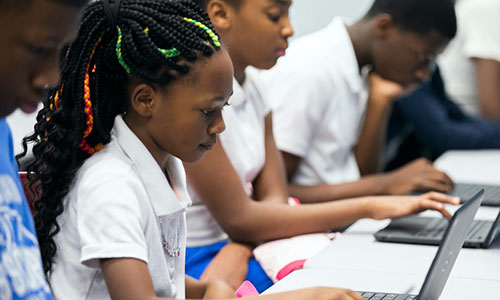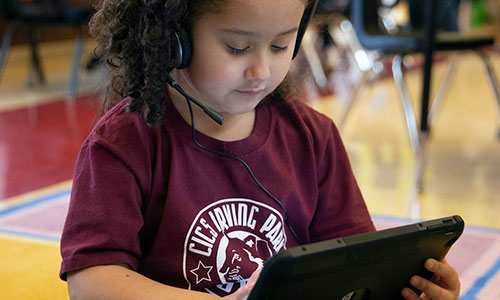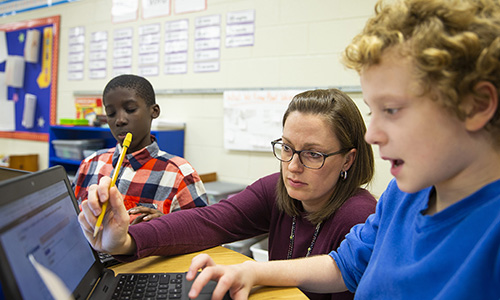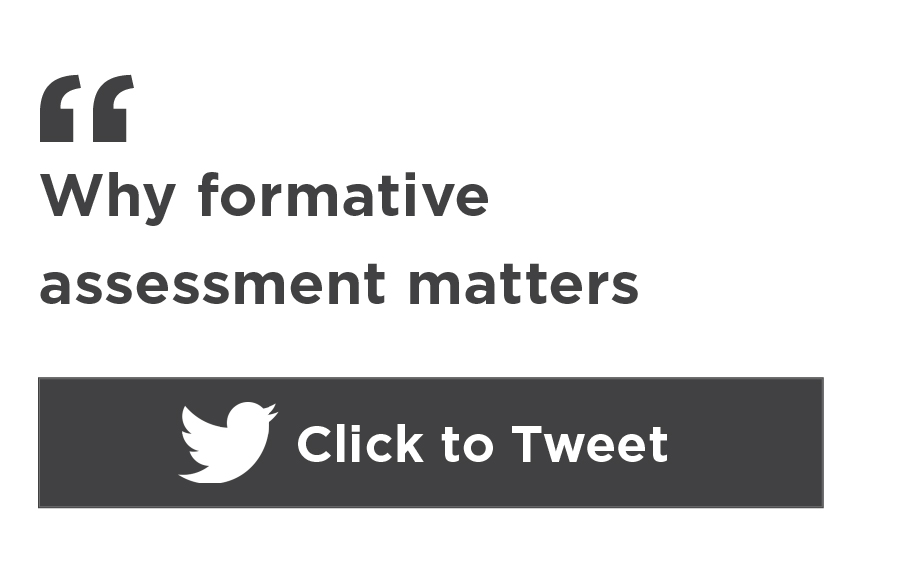
Human-centered formative assessment drives long-term, holistic success for students. Because there is still confusion around this type of assessment, let’s explore what it is and why it should be a part of our responsive teaching and learning cycles.
“Formative assessment” defined
As an organization, NWEA subscribes to the revised definition from CCSSO: “Formative assessment is a planned, ongoing process used by all students and teachers during learning and teaching to elicit and use evidence of student learning to improve student understanding of intended disciplinary learning outcomes and support students to become self-directed learners.”
Let’s take a closer look at the key phrases in that definition:
- “Planned, ongoing process.” Formative assessment is a continuous, low- or no-stakes, responsive process comprised of practices, methods, and tools that are selected to support all students in reaching challenging learning goals. Teachers and students collaborate to use this kind of assessment in responsive ways that positively impact learners and learning. They partner to know and respond to strengths, interests, and needs.
- “All students and teachers during learning and teaching.” Formative assessment is a collaborative learning process happening “with” students, not “to” students.
- “Elicit and use evidence of student learning.” Formative assessment processes capture levels of knowledge and skill along the learning journey so teachers and students can make small, immediate, impactful decisions to support well-being, learning-goal achievement, and self-efficacy. Using formative assessment evidence is appropriate for making decisions during the practice phases of learning; formative assessment scores are not appropriate for calculating grades or for making placement decisions.
- “Support students to become self-directed learners.” This type of assessment includes students as active agents in the learning journey, which fuels learning and agency in learning environments and beyond. Engaging students in goal setting is a great way to do this.
What does formative assessment look like?
Little is required to start formative assessment processes because they can begin with a variety of methods and tools. Instead of specific programs, supplies, or resources, effective processes involve partnering with students to incorporate the following five practices into cycles of responsive teaching and learning.
- Clarifying learning goals and success criteria within a broader progression of learning. Students should have context for what they’re learning: why they’re learning it, how it connects to previous lessons and their own interests, and what success looks like. Having goal clarity, purpose, and a path promotes student motivation and agency.
- Eliciting and analyzing evidence of student thinking. Whether it’s capturing ideas on a whiteboard, responding to an online survey, or giving a thumbs-up or down in response to a check for understanding, an effective process centers on knowing learning goals, then gathering, interpreting, and responding to learning-goal evidence.
- Engaging in self-assessment and peer feedback. This type of assessment is more than providing feedback from teacher to student. As I explained in “The importance of student self-assessment,” having students reflect on their progress helps them become active participants in their learning. The process should also involve students collaborating with each other, asking questions, making observations, celebrating successes, and suggesting improvements in ways that support them in attaining challenging learning goals.
- Using actionable feedback. Once learning evidence is collected, teachers work with students to ensure that they have both the time and processes to apply feedback in ways that move learning forward.
- Responding by adjusting learning strategies or next instructional steps. This practice is the “why” of formative assessment. To make the process effective, we must collaborate with students to use evidence and insights to propel learners toward shared and personal short- and long-term goals.
Why formative assessment is so important
As my colleague Chase Nordengren noted, “[f]ormative assessment is [critical] for educators looking to unlock in-depth information on student learning. […] Using strategies that expose misconceptions, support higher-level thinking within a subject, and engage students in academic discourse, formative assessment provides the real-time feedback necessary to dynamically adjust instruction to meet learner needs as they emerge and change.”
In short, formative assessment helps us evaluate whether our plans and responsive “moves” are working, while there’s still time to do something about it. It celebrates that learning is an ongoing process, complete with stretches of success and periods of struggle, and it helps us remember that learning is not linear but, instead, an endeavor that rewards effort, persistence, and dedication. Best of all, it helps us collaborate with students as co-partners in the entire learning experience. Together we are a learning team, one that makes anything possible.
Ready for more?
There is no shortage of information and resources available on formative assessment. For easy-to -implement, research-based strategies, check out our eBook, Making it work: How formative assessment can supercharge your practice, and our article “27 easy formative assessment strategies for gathering evidence of student learning.” Our professional learning team also offers five workshops that can engage you and your colleagues in deep dives designed and delivered by expert educators.





